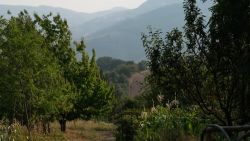Indiana may have been the 19th state to enter the United States, but it took until 2019 for the Hoosier State to get its first national park.
A 15,000-acre area in northwestern Indiana along the shore of Lake Michigan, Indiana Dunes National Park is now the country’s 61st national park. It’s about 50 miles from from Chicago, the third-largest city in the United States.
One of 418 National Park Service areas across the country, it was previously known as Indiana Dunes National Lakeshore. It was made a National Park as part of the omnibus appropriations bill signed by President Donald Trump in February. It was named a national lakeshore in 1966.
Local National Park service staff announced the news on their official Twitter account on February 15, sharing a photograph of uniformed staff members standing around the welcome sign to the area. Their handmade sign reading “Park” covers the word “Lakeshore.”
“This is a big recognition,” Amy Howell, the director of communications for Visit Indiana, the state’s tourism board, tells CNN Travel. “It will put Indiana on the map more than it already is, for people who don’t know where it is.”
Already, Indiana Dunes is the state’s most-visited site, with about 3.5 million visitors per year, mostly from the region.
Now, says Howell, the national recognition will likely bring more visitors to Indiana Dunes, as many travelers get NPS “passports” and cross off the parks they’ve visited.
“It has more plant and animal species than Hawaii, and I don’t think people realize that’s in Indiana. You can get to the dunes from three different states in a matter of an hour’s drive,” she adds.
While Indiana does have several other nationally-recognized sites, including the Lincoln Boyhood National Memorial, which is also managed by the park service, Indiana Dunes is the state’s first official national park.
“For more than 100 years, the dunes and plant communities in the park have been natural field laboratories for scientific studies of ecology, ” reads an Indiana Dunes foundational document (PDF) submitted to the park service. “The theory of ecological succession was developed from research conducted here.”
In addition, the park is home to some 1,100 native species of plants. The highest dunes, which were formed after the melting of glaciers, can reach 192 feet.















